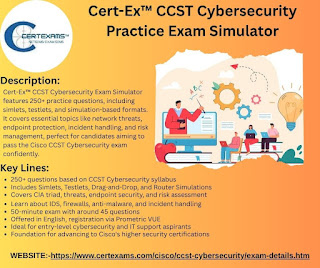CWNA, short for Certified Wireless Network Administrator, is offered by CWNP organization. The certification is unique in the sense that CWNA covers the wireless networking topics elaborately and probably the only certification offering domain skills in analog as well as digital technologies. The exam covers antenna and propagation topics which are not covered in many other similar wireless networking certifications. The topics covered in the CWNA exam are given below:
Radio Frequency (RF) Technologies:
- Understanding RF basics like spectrum, wavelengths, frequencies, and power
- Exploring RF propagation characteristics and signal behavior
- Recognizing FCC regulations and their impact on WLAN deployment
- Grasping concepts like interference, noise, and signal-to-noise ratio (SNR)
Antenna Concepts:
- Identifying different antenna types and their functionalities (omnidirectional, directional, sectoral)
- Understanding antenna patterns and how they affect coverage
- Learning about antenna gain, placement best practices, and installation guidelines
- Recognizing antenna systems and accessories like cables, connectors, and lightning arrestors
Wireless LAN Hardware and Software:
- Familiarizing yourself with various WLAN devices like access points (APs), controllers, and switches
- Analyzing different WLAN software components like drivers, firmware, and management tools
- Understanding WLAN architectures like centralized, autonomous, and distributed
- Recognizing WLAN topologies like point-to-point, mesh, and point-to-multipoint
Network Design, Installation, and Management:
- Learning about WLAN site surveys and their importance in network planning
- Understanding principles of WLAN capacity planning and channel selection
- Exploring best practices for WLAN integration with wired networks and security considerations
- Configuring and managing WLANs using vendor-neutral methods
Wireless Standards and Organizations:
- Delving into the 802.11 family of standards (including legacy, current, and upcoming versions)
- Recognizing the roles of Wi-Fi Alliance and IEEE in standardizing WLAN technologies
- Understanding interoperability considerations between different 802.11 versions and vendors
802.11 Network Architecture:
- Grasping the fundamental concepts of OSI model and its application in WLANs
- Analyzing the data path and control path functions in 802.11 networks
- Exploring authentication, authorization, and accounting (AAA) mechanisms for user access
- Understanding roaming techniques and their importance for seamless user experience
Wireless LAN Security:
- Identifying different WLAN security threats and vulnerabilities
- Implementing strong WLAN security measures like WPA2/3, AES encryption, and port security
- Understanding best practices for secure WLAN configuration and monitoring
- Recognizing wireless intrusion detection and prevention systems (WIDS/WIPS)
Troubleshooting:
- Learning basic troubleshooting techniques for common WLAN issues (connectivity, performance, interference)
- Understanding tools and diagnostics for identifying and isolating WLAN problems
- Applying troubleshooting methodologies for efficient problem resolution
Additionally, the CWNA curriculum may involve Basic concepts of IP addressing and subnetting, Introduction to network protocols like TCP/IP and UDP, and Familiarity with basic network security principles.
The CWNA practice tests offered by simulationexams.com consists of 200+ questions with answers and explanations for each question. The question bank is updated time to time to reflect the current syllabus for thorough preparation. The exam mimics the actual CWNA exam in difficulty level and also the exam options and features to a large extent. Students can bookmark difficult topics and revisit the same at a later time for review.
You may download the free practice test with 30 questions by following the link given below. Full version consists of 200+ questions with answrs.
Sim-Ex™ Practice Exams for CWNA-109 Download (simulationexams.com)
Good luck!




No comments:
Post a Comment